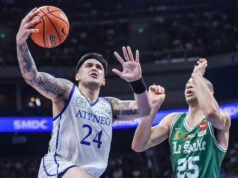72nd Russian Championship SuperFinals
Votkinsk/Izhevsk, Udmurt Republic, Russia
August 10-22, 2019
Final Standings (All top 12 are GM)
1 . Evgeny Tomashevsky 2706, 7.0/11
2-4. Nikita Vitiugov 2728, Maxim Matlakov 2710, Ernesto Inarkiev 2682, 6.5/11
5-8. Alexander Motylev 2668, Vladislav Artemiev 2757, Alexandr Predke 2650, Kirill Alekseenko 2668, 5.5/11
9. Aleksey Dreev 2662, 5.0/11
10-11. Alexey Sarana 2635, Vladimir Fedoseev 2671, 4.5/11
12. Dmitry Jakovenko 2704, 3.5/11
Average ELO 2688 Category 18
Time Control: 90 minutes for the first 40 moves, then 30 minutes play-to-finish with 30 seconds added to your clock after every move (the so-called increment) starting move 1
Together with the start of the Russian SuperFinals their Federation also announced that the Russian Ministry of Education has now decided to make chess a compulsory subject throughout Russia. In April this year, chess lessons were introduced in 18,000 Russian schools, almost half of all general education schools in Russia. Starting Sept. 1, all Russian first graders will study chess for at least 33 hours per year. Chess replaces the third period of physical education class.
This new rule was hailed as a giant step towards ensuring the continued discovery of young chess talents all over the country.
Do you know that here in the Philippines we already had such a program 10 years ago? Through the efforts of Bro. Rolando Dizon of Dela Salle University, DepEd Memo No. 1 series of 2009 was passed “Strengthening the Development of Higher Order Thinking Skills and Values Among Children Through Chess.” This was signed by then Secretary of Education Jesli Lapus.
It mandated to adopt chess as another strategy to promote the development of higher order thinking skills and values among Grades 3-6 children in the subject “Edukasyon sa Pagpapalakas ng Katawan.” In addition to that chess will be continuously used at the secondary level also as part of the Physical Education curriculum. Likewise, it shall remain as a game category in the Provincial, Regional and National Athletic Meets.
Guidelines were also set out in the same Department Memorandum on what the various Divisions, Regions and Central Office should do to implement the new Order.
Well, the stage was set but there was no follow-up, and the whole enterprise just died a natural death. I hope the same thing does not happen to the Russian initiative.
Back to the Russian Chess SuperFinals. As I told you last Tuesday GM (Grandmaster) Evgeny Tomashevsky won his second Russian Championship with a 3-win 8 draw score to finish half a point ahead of his pursuers.
Vladislav Artemiev was one the ELO favorite and the current European Champion, as well as placing a strong second in last December’s World Rapid Championships. Here in Izhevsk though he could only notch up an even score (3 wins, 3 losses, 5 draws). Even more of a negative surprise was Dmitry Jakovenko who tied for first in last year’s SuperFinals. He was unrecognizable here, finishing last with no wins, 4 losses and 7 draws.
There are three names here which might not be familiar to the BW reader. There is the 19-year-old Alexey Sarana, the 22-year-old GM from St. Petersburg Kirill Alekseenko and 25-year-old GM Alexandr Predke (from Dimitovgrad). All three of them qualified for the SuperFinals by topping the qualification event in Yaroslavl, the 2019 Higher League (actually, five players qualified, the other two being the veteran Alexey Dreev and former European Champion Alexander Motylev).
Today, however, I would like to highlight the attractive attacking play of GM Kirill Alekseenko. Born in 1997 in Saint Petersburg, Alekseenko earned his grandmaster title in 2015. He had achieved the necessary norms in 2012 but did not reach the required FIDE rating of over 2500 until 2015. He has won the Chigorin Memorial, one of the strongest Russian Opens, in three consecutive years 2015, 2016 and 2017.
First, a short sidetrip. Magnus Carlsen has popularized a way of playing against the Sicilian Defense, and I am going to show it to you right now. Since I had already previously annotated this game in “Chess Piece,” I will just point out the major highlights.
Svidler, Peter (2735) — Carlsen, Magnus (2845) [B30]
GRENKE Chess Classic 6th Karlsruhe/Baden Baden (8), 28.04.2019
1.e4 c5 2.Nf3 Nc6 3.Nc3 e5 4.Bc4 Be7 5.d3 d6 6.Nd2
This is Kasparov’s idea, fortifying White’s hold on the d5–square by means of Nf3–d2–f1–e3.
6…Nf6 7.Nf1
Step 1. Bring his knight from f6–d7–b6 with the idea of destroying the c4–bishop.
7…Nd7!? 8.Nd5 Nb6 9.Nxb6!?
White wants to keep his light-squared bishop.
9…axb6 10.c3
This pawn move is important. if immediately 10.Ne3 then 10…b5! 11.Bxb5 Qa5+ forking the white king and bishop.
10…0–0 11.Ne3
Step 2. Black’s dark-squared bishop is hemmed in by his own pawns. He should exchange it off, preferably with its counterpart bishop.
11…Bg5 12.0–0 Kh8
Annotating this game for “New in Chess” magazine GM Peter Nielsen remarked that here Kramnik took on e3 followed by …Qe7 and Be6 equalizing. To wit: 12…Bxe3 13.Bxe3 Qe7 14.f4 exf4 15.Bxf4 Be6 16.Bxe6 Qxe6 17.Qb3 Qxb3 18.axb3 Rad8 19.Bg3 Rd7 20.Rf5 Rfd8 21.b4 Ne7 ½–½ Leko, P. (2739)-Kramnik, V. (2785) Dortmund 2003. So, no problem getting the draw, but then Nielsen asks “but how do you actually play for a win?” Magnus’ answer is to go for ..f7–f5, and he shows here how.
13.a3?! f5! 14.Nxf5 Bxc1 15.Rxc1 Bxf5 16.exf5 d5! 17.Ba2 Rxf5 18.Qg4 Rf6 19.f4?! exf4 20.Qg5
[20.Rxf4? is refuted by 20…Ne5! 21.Qg3 Rxf4 22.Qxf4 Nxd3]
20…Qf8!
Now Magnus’ attack develops of its own accord.
21.Qxd5
Trying to get his bishop back into play with 21.Bxd5 does not work because of 21…Rf5!
21…Rd8! 22.Qf3 Ne5 23.Qe4 Ng4!
Going for …Ne3.
24.Rce1 Ne3 25.Rf2 Re8! 26.Qxb7 g5! 27.Rfe2 g4 28.Rf2 Qh6! 29.Qc7 Ref8! 30.h3 gxh3 31.g3 fxg3 32.Rxf6!? h2+! 33.Kh1 g2# 0–1
Now let us look at how Alekseenko adopted Magnus’ idea.
Jakovenko, Dmitry (2711) — Alekseenko, Kirill (2650) [B30]
72nd RUS-ch SuperFinals 2019 Izhevsk (6.6), 16.08.2019
1.e4 c5 2.Nf3 Nc6 3.Nc3 e5 4.Bc4 Be7 5.d3 d6 6.Nd2
Are we seeing the end of Kasparov’s maneuver with this knight? Wesley So has opined that the line with 6. O-O Nf6 7. Ng5 $1 O-O 8. f4 exf4 9. Bxf4 h6 10. Nf3 Be6 11. Nd5 is better for White.
6…Nf6 7.Nf1 Nd7 8.Nd5 Nb6 9.Nxb6 axb6 10.Ne3?!
As I pointed out in the previous game White should play 10.c3 first.
10…Bg5
For some reason Alekseenko does not go for 10…b5! where the bishop is forced to b3 or d5 because 11.Bxb5 loses to 11…Qa5+!. Anyway he perhaps did not want to get sidetracked and proceeds to step 2 of the Carlsen plan, exchange off the dark-squared bishop, preferably for its white counterpart.
11.0–0 0–0 12.a4 Kh8 13.Nd5 Bxc1 14.Qxc1 f5
Step 3, Open the f-file and attack like crazy.
15.exf5 Bxf5 16.f4 Be6 17.Qd2 Bg8 18.f5!?
Jakovenko is a positional player and one of Russia’s finest endgame specialists. I wonder about this move, did he intend to follow this up with g2–g4?
18…Nd4! 19.c3
It turns out that 19.g4? is not possible because of 19…b5! 20.Ba2 (20.axb5? Rxa1 21.Rxa1 Nf3+) 20…Rxa4 21.Qg2 b4 Black is already winning.
19…Nxf5 20.Qe2 Bxd5 21.Bxd5 Qd7 22.Qf3
Winning back his pawn as he is threatening Bxb7 as well as g2–g4.
22…Rf6 23.Bxb7 Raf8 24.Bc6 Qd8 25.Be4 Ne7 26.Qh3 g6 27.Rxf6 Rxf6 28.Qe3 Qc7 29.b4 cxb4 30.cxb4 Qc3 31.Qe1 Qd4+ 32.Kh1 d5 33.Bf3 Nc6 <D>
POSITION AFTER 33…NC6
The crucial position.
34.a5?
A serious misjudgement. Jakovenko goes for an a-pawn fastbreak but Alekseenko’s attacking prospects kick in with more speed.
34…Nxb4 35.a6? Nxd3 36.Qb1 Nf2+ 37.Kg1 g5!
Probably what Mr. Jakovenko overlooked. The idea behind this move is to clear the way to h6 for the Black rook so that if for example 38.a7 Ne4+ 39.Kh1 Ng3+! 40.hxg3 Rh6+ followed by mate.
38.Qa2
So that if 38…Ne4+ 39.Kf1 there is no mate on f2.
38…Ng4+ 39.Kh1
[39.Kf1 Nxh2+ 40.Ke1 (40.Ke2 e4) 40…Nxf3+ 41.gxf3 Rxf3 Black wins]
39…Qf4! 0–1
The point is that after 39…Qf4 40.Kg1 Qe3+ 41.Kh1 (41.Kf1 Nxh2#) 41…Nf2+ 42.Kg1 Ne4+ 43.Kf1 (43.Kh1 Ng3+) 43…Ng3+ 44.hxg3 Rh6–+ the devastating …Rh1 cannot be stopped]
Bobby Ang is a founding member of the National Chess Federation of the Philippines (NCFP) and its first Executive Director. A Certified Public Accountant, he taught accounting in the University of Santo Tomas for 25 years and is currently Chief Audit Executive of the Equicom Group of Companies.



